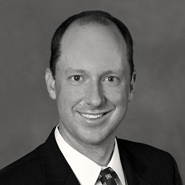On Even Split, En Banc Fourth Circuit Affirms FCA Dismissal Based on ‘Objectively Reasonable Interpretation’ Defense
October 5, 2022 – Articles
Following rehearing en banc, an evenly split full Fourth Circuit has affirmed the district court’s dismissal of a qui tam action based on the defendant’s “objectively reasonable” interpretation of ambiguous regulations—the Safeco defense. Though the Fourth Circuit panel’s decision is now vacated, no circuit split exists on the question. Nevertheless, the Supreme Court is weighing a possible grant of cert in two similar Seventh Circuit cases.
The Fourth Circuit’s highly anticipated rehearing en banc of United States ex rel. Sheldon v. Allergan Sales, LLC[1] has resulted in a tie—and no substantive opinion from the court. In Sheldon, the full Fourth Circuit took up the issue of whether a defendant’s “objectively reasonable interpretation” negated the intent element of a False Claims Act (FCA) claim. Because the full court was evenly split, it issued a per curiam decision affirming the district court’s dismissal on that ground and vacating the earlier panel decision.[2]
As discussed in earlier posts (including this one, in advance of the rehearing en banc), the “objectively reasonable” test stems from the Supreme Court’s interpretation of “reckless disregard” under another statute. [3] In Safeco, the Supreme Court held that where there is more than one reasonable interpretation of a statute or regulation in light of relevant judicial and agency guidance, “a defendant who merely adopts one such interpretation [cannot be treated] as a knowing or reckless violator.”[4] Multiple circuit courts have applied Safeco to the FCA, holding a defendant lacks the requisite intent when its interpretation of an ambiguous statute or regulation was “objectively reasonable”—and no “authoritative guidance” from a court of appeals or the relevant agency “warned [the defendant] away” from that interpretation.[5]
Although the Department of Justice (DOJ) and the relators’ bar have vigorously contested application of Safeco to the FCA, courts considering the issue have been remarkably consistent in holding that the Safeco test applies.[6] But, the Fourth Circuit’s decision to grant en banc review and the highly contentious oral argument signals there may be a greater divide than was previously evident. In Sheldon, questions from the full court suggested deep division among the judges as to whether the Safeco defense permits defendants to escape liability merely by coming up with a plausible post hoc defense, and whether it in effect negates the “knowing” and “willful ignorance” bases for scienter. And, the Supreme Court recently asked for the Solicitor General’s views on the issue in connection with pending petitions for certiorari in two Seventh Circuit cases recognizing the defense: United States ex rel. Schutte v. SuperValu Inc.[7] and United States ex rel. Proctor v. Safeway, Inc.[8]
Ultimately, there is no circuit split to resolve because no circuit has expressly rejected the application of Safeco to the FCA. The petitioners in SuperValu attempt to cobble together a purported split by citing cases pre-dating Safeco and cases in which circuits have found the defense to be factually inapplicable. For example, they rely heavily on the Eleventh Circuit’s holding in United States ex rel. Phalp v. Lincare Holdings, Inc.,[9] which some have read as rejecting Safeco’s availability as a defense to FCA scienter.[10] However, what Phalp (which did not mention Safeco) actually declined to adopt was a rule permitting reasonable interpretation of an ambiguous statute, without more, to defeat scienter[11]—in effect, Safeco’s first prong alone. In a decision issued earlier this year, the Eleventh Circuit confirmed that Safeco applies.[12]
What is the outlook for the “objectively reasonable” defense to FCA scienter? It’s hard to say. Unless and until the Supreme Court grants cert, the law is relatively clear—Safeco’s objective reasonableness test applies to the FCA. We will continue to watch the cert petitions to see whether the Supreme Court may step in to change that.
[1] 24 F.4th 340 (4th Cir. 2022), vacated by No. 20-2330, 2022 U.S. App. LEXIS 26729 (4th Cir. Sept. 23, 2022) (per curiam). The district court opinion affirmed by both the panel and the en banc court was United States ex rel. Sheldon v. Forest Labs., LLC, No. ELH-14-2535, 2020 U.S. Dist. LEXIS 249501 (D. Md. Nov. 5, 2020).
[2] See Sheldon, 2022 U.S. App. LEXIS 26729, at *1; cf. Compucredit Holdings Corp. v. Akanthos Capital Mgmt., 698 F.3d 1348, 1349 (11th Cir. 2012) (quoting United States v. Geders, 585 F.2d 1303, 1306 (5th Cir. 1978) (en banc)) (holding that, where a “court en banc is evenly divided,” the district court judgment being appealed “is affirmed by operation of law”).
[3] Safeco Ins. Co. of Am. v. Burr, 551 U.S. 47 (2007).
[4] Id. at 70 n.20 (alteration added)
[5] See, e.g. United States ex rel. Purcell v. MWI Corp., 807 F.3d 281, 288–89 (D.C. Cir. 2015) (quotation omitted) (alteration by D.C. Circuit). With Purcell, the D.C. Circuit became the first court of appeals to apply the Safeco defense in the FCA context.
[6] See Sheldon, 24 F.4th at 348 (“In adopting this standard, we join each and every circuit that has considered Safeco’s applicability to the FCA.”). See also United States ex rel. Schutte v. SuperValu Inc., 9 F.4th 455, 465 (7th Cir. 2021); United States ex rel. Streck v. Allergan, Inc., 746 F. App’x 101, 106 (3d Cir. 2018) (unpublished); United States ex rel. McGrath v. Microsemi Corp., 690 F. App’x 551, 552 (9th Cir. 2017) (unpublished); United States ex rel. Donegan v. Anesthesia Assocs. of Kansas City, PC, 833 F.3d 874, 879–80 (8th Cir. 2016); Purcell, 807 F.3d at 284.
[7] 9 F.4th 455.
[8] 30 F.4th 649 (7th Cir. 2021).
[9] See Petition for a Writ of Certiorari at 14–15, 22, United States ex rel. Schutte v. SuperValu, Inc., No. 21-____ (2022).
[10] See, e.g., SuperValu, 9 F.4th at 479–80 (Hamilton, J., dissenting) (citing Phalp, 857 F.3d 1148, 1155 (11th Cir. 2017)).
[11] See Phalp, 857 F.3d at 1155 (citing United States ex rel. Minn. Ass’n of Nurse Anesthetists v. Allina Health Sys. Corp., 276 F.3d 1032, 1053–54 (8th Cir. 2002)) (scienter established where defendant knowingly disregards proper interpretation of an ambiguous regulation).
[12] See United States ex rel. Olhausen v. Arriva Med., LLC, No. 21-10366, 2022 U.S. App. LEXIS 10989, at *4–6 (11th Cir. Apr. 22, 2022) (unpublished) (applying Safeco and affirming dismissal because the defendant’s “objectively reasonable conclusion . . . negates the scienter element”).


